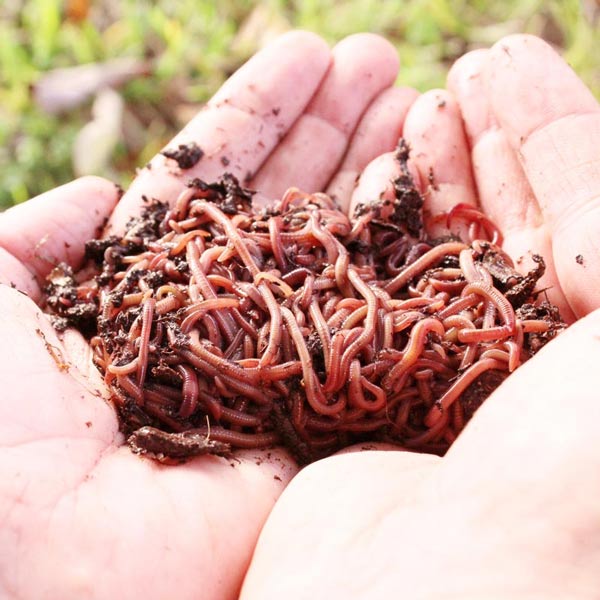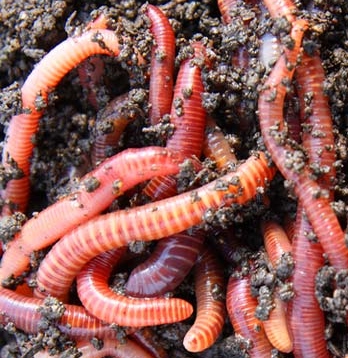Making Use Of Red Wigglers for Efficient Organic Garbage Disposal
The usage of red wigglers for organic waste disposal offers an engaging approach to handling food scraps while advertising ecological sustainability. These worms not only enhance waste decay yet additionally yield important worm spreadings, which can dramatically boost soil health. Their capability to process big quantities of natural material with minimal effort settings them as an easily accessible remedy for houses and communities alike. However, comprehending the nuances of establishing a successful worm bin and maintaining an optimal habitat is essential for maximizing their benefits. The next action in this procedure might shock you.
Advantages of Utilizing Red Wigglers
One of one of the most engaging advantages of making use of red wigglers for organic waste disposal is their impressive effectiveness in composting. These worms, scientifically recognized as Eisenia fetida, are particularly adapted for damaging down organic products, enabling them to refine waste as much as twice their body weight every day. This rapid disintegration not only increases the composting process yet likewise produces nutrient-rich worm spreadings that significantly boost soil top quality.
Additionally, red wigglers add to a reduction in garbage dump waste. By diverting organic products from land fills, they assist decrease methane discharges-- a powerful greenhouse gas. This ecological advantage is crucial in the fight versus climate modification.
Moreover, red wigglers are low-maintenance and can prosper in different environments, making them obtainable for both amateur and knowledgeable composters. Their capacity to recreate quickly makes sure a constant population, assisting in recurring waste processing.
Setting Up Your Worm Container
Developing an effective worm bin is necessary for making the most of the benefits of composting with red wigglers. The initial action is picking an appropriate container. A bin made from plastic or wood, with a capability of 10 to 20 gallons, is excellent. Ensure the bin has sufficient drain holes to stop excess wetness, as red wigglers prosper in a wet yet not soaked atmosphere.
(red wiggler fishing worms)Next, prepare the bed linens material, which serves as the worms' environment and food resource. Shredded newspaper, cardboard, and coconut coir are exceptional alternatives. Go for a bed linen deepness of around 4 to 6 inches. The bin must be positioned in a dark, temperature-controlled location, ideally between 55 ° F and 77 ° F, to preserve worm task.
As soon as the bin is set up, introduce the red wigglers, enabling them to adapt to their brand-new setting. It's crucial to keep track of wetness levels and temperature consistently. A properly maintained container will certainly not just sustain the wellness of the worms yet additionally facilitate reliable disintegration of natural waste. By complying with these guidelines, you can create a flourishing ecological community that adds to lasting waste monitoring.
(red worms for composting)
What to Feed Red Wigglers
An understanding of the ideal diet regimen for red wigglers is essential for maintaining a healthy worm populace and optimizing composting efficiency. These items not only provide important nutrients but also contribute to the moisture equilibrium within the worm container.
It is critical to stay clear of particular foods that can damage the worm populace. Red wigglers must not be fed meat, dairy products, oily foods, or processed things, as these can bring in parasites and develop unpleasant odors. red wigglers. Additionally, citrus fruits and zesty foods need to be lessened, as their level of acidity can be harmful to worms
To advertise optimum digestion, food ought to be chopped right into smaller sized pieces, facilitating quicker failure and intake. Introducing food in moderation is additionally crucial; overfeeding can result in anaerobic conditions and bring in unwanted pests. Checking the worm bin for food consumption prices will assist ensure that red wigglers are obtaining a sufficient diet regimen while keeping an effective composting environment. Correct feeding directory practices are essential for cultivating a flourishing ecosystem within the worm container.
Preserving Your Worm Environment
A well-maintained worm habitat is vital for the health and wellness and efficiency of red wigglers. To make certain optimum problems, it is crucial to monitor temperature, moisture, and aeration within the worm bin (red wigglers).
Moisture degrees need to be maintained regular; the bed linens needs to perspire yet not soaked. A great guideline is to preserve wetness at roughly 70% to 80%. If the bedding becomes too damp, it can bring about anaerobic problems that are dangerous to the worms. Adding dry carbon-rich products, such as shredded paper or cardboard, can aid take in excess wetness.

Using Worm Spreadings in Horticulture
Rich in nutrients and valuable microbes, worm spreadings function as an outstanding natural fertilizer for gardening. Generated via the digestive system procedures of red wigglers, these castings include an array of important nutrients, including nitrogen, phosphorus, and potassium, which advertise durable plant growth. Unlike artificial plant foods, worm castings offer a slow-release device, making sure that nutrients are offered to plants over an extended duration, consequently decreasing the risk of nutrient leaching and dirt exhaustion.
Along with vitamins and mineral content, worm spreadings enhance soil framework and aeration, enhancing dampness retention and drainage. The microbial life present in worm spreadings helps to reduce virus and advertises a healthy and balanced soil environment, more benefiting plant health and wellness. When included right into the soil or utilized as a leading clothing, worm spreadings can considerably improve seed germination prices, origin development, and overall plant vigor.
For ideal outcomes, garden enthusiasts should apply worm castings at a rate of 1-2 inches per square foot, mixing them right into the dirt or including them right into potting blends. Overall, using worm castings is an environment-friendly strategy to improving dirt fertility and making certain thriving garden settings.
Verdict
